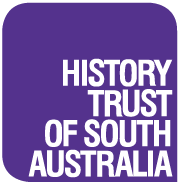Officially opened on 3 February 1995 by Her Excellency the Honourable Dame Roma Mitchell, Governor of South Australia, the museum had its origins in the late 1980s following the closure of the railway line between Kingston and Naracoorte. Local residents gathered historical items from the district and used the old railway buildings for their storage and display.
A number of other buildings were relocated to the site and the museum now consists of the following:
- Station Parcels Office: displaying the Pat Conrick Collection (Aboriginal weapons and tools and geological specimens); dairy items; cameras; cooking and heating and other household items; pioneering agricultural practices; early railways
- Train Control Room: displaying early communication equipment including the telephones used to control the trains, early valve radios, the first television in the area and the Lucindale Telephone Exchange
- Porter’s Room; displaying early business machines, typewriters, duplicating machines and cash registers
- Railway Goods Wagons: displaying kerosene incubators, mangles, horse harness and a blacksmiths forge
- Goods Shed: displaying vintage vehicles, Stationary Engines, Shearing plants, and tool displays including a collection of early lawnmowers
- Old School Room: originally from the Mallee and a typical multiple class single room building, displaying early desks and writing materials
- 1935 Cottage: relocated from the town and restored and set up to resemble a typical home of the era
- Conmurra District Hall: displaying three Church organs from the district, Edison phonograph and two gramophones; medical equipment from the Millicent Hospital; early lighting equipment
- Lands Department Soldier Settlement temporary housing unit: previously used as the Scout Hall, it has been restored to when it was in use in the 1950s and set up at one end with period furniture and appliances; while the other end is set up as a Memorial to Returned Servicemen from all wars.
- Lands Department building: now the Tractor shed
- Large Machinery Shed (Ralph & Nancy James Shed): displaying a variety of early agricultural equipment from horse drawn implements to tractor drawn units.
There are also a number of other pieces of machinery in the grounds including ploughs that were used in the opening up of the Lucindale district and a buck scraper and a grader used in road building by the Lucindale District Council in the 1930s.
Members of the Lucindale Historical Museum rely on volunteers donating their time at the SE Field Days to generate the main source of income to maintain the museum’s attractions and facilities.They are also assisted by the Naracoorte Lucindale Council and many local community groups and businesses.
Group bookings available and morning or afternoon tea can be arranged if required.

